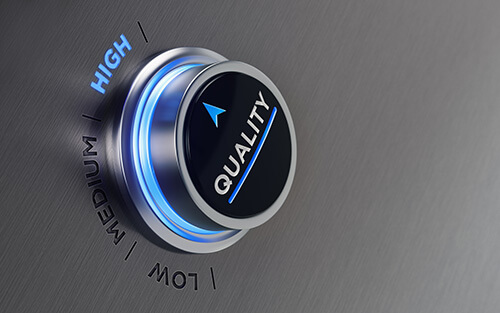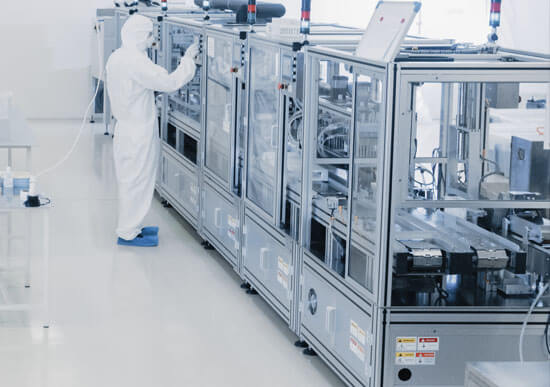Five Important Insights from the PDA Europe Annex 1 Event

[Author’s Note: This article's contents are solely the author's opinion and do not represent the opinions of PharmaLex GmbH or its parent, Cencora. PharmaLex and Cencora strongly encourage readers to review the references provided with this article and all available information related to the topics mentioned herein and to rely on their own experience and expertise in making decisions related thereto.]
Since the publication of the first draft of EU GMP Annex 1: Manufacture of Sterile Medicinal Products (1), the PDA has organized several Annex 1 workshops across the globe where industry experts and regulators shared their knowledge and experience about sterile manufacturing and the guidance provided in the updated document. The Workshop event in Dublin was the 15th and last in this setting.
Like previous workshops, participants had the opportunity to ask a panel of experts and regulators about topics related to the revision and actively engage with peers from the industry during the various round-table discussions. As Annex 1 has been in operation since August 2023 and companies are now inspected against these requirements, the venue provided an excellent opportunity to share experiences and challenges they faced from these regulatory inspections.
Discussions centered on interpreting some of the text of Annex 1 and observations made by regulatory bodies. There were five discussion points raised, including the following:
- Regulators perspective since Annex 1 became effective
- Quality risk management (QRM)
- Knowledge management
- Barrier systems and cleanroom design
- Contamination control strategy (CCS)

1. Annex 1 – A Regulator's Perspective
Companies involved in manufacturing sterile medicinal products are expected to comply with Annex 1 since August 2023. The task of a GMP inspection is to determine if companies are compliant with GMP principles. The inspected company is responsible for achieving compliance, and the regulator is there to verify if the company’s practices comply with the rules and regulations. Two European Medicines Agency inspectors provided their insights and experience from inspections conducted across the industry since the final revision was published, in which they outlined trends in deficiencies observed about compliance with Annex 1 and sterile manufacturing in general.
As the final revision was published in August 2022, organizations had one year to assess gaps and implement remediation plans to ensure they met the expectations outlined in Annex 1. The first point emphasized by the inspector was that CAPAs from the initial gap assessments should have been implemented by now. Where this is not the case, companies are encouraged to seek dialogue with their inspectorates. It was mentioned that action plans with due dates running into 2025 were unacceptable, with some exceptions. For example, when a company is implementing barrier systems, such projects take an extended period of time. Inspectors told the audience that classic Grade A/B settings are, in fact, an obsoleted design, and companies are expected to have a plan in place to implement these technologies. During the implementation phase, interim measures are expected to be taken to improve sterility assurance.
Both inspectors provided a summary of what their inspectorates came across since the publication of the final revision of Annex 1. The Danish inspector presented that to this date, no observations were made regarding CCS. He reiterated that companies must understand that risk assessments or an aseptic process simulation cannot be used to justify bad practices that could pose a risk of introducing microbiological contamination.
The Irish inspector outlined that to date, 29 inspections have been completed, and contrary to the Danish colleague, in Ireland, the most commonly cited observation was in relation to CCS, in particular where the CCS is still not captured as one central document. This represented 10% of all citations, followed by deficiencies with environmental monitoring (EM) programs (9%), personnel and aseptic behaviors (7%), company’s aseptic processing simulations (3%), and decontamination methods (3%).

2. Quality Risk Management

QRM is focused on the identification and mitigation of risks for the protection of the patient. However, the inspectors mentioned that the application of the principles of QRM is still predetermined and has not been used to determine the real risks. The presenter also echoed this on the topic of QRM. Since the publication of the first revision of the International Council of Harmonisation (ICH) guideline ICH Q9: Quality Risk Management in 2006 (2), companies started to look at performing a lot of risk assessments. However, these were all individual and siloed assessments without a holistic review of the combined risks. The most recent revision of ICH Q9: Quality Risk Management (3), published in 2023, highlights the application of thoughtful and objective decision-making throughout the QRM lifecycle. Living risk assessments like CCS, process risk assessments, and facilities risk assessments are the core risk assessments as they monitor the overall systems. Adhoc risk assessments are single decision points, such as deviation impact assessments and change controls.
It was presented that avoiding creating large numbers of disconnected risk assessment efforts is important, as efforts should be cross-functional and streamlined through a risk assessment portfolio. A QRM master plan is a useful tool as its contents should indicate what living risk assessments are present or to be created across a company and what the timelines are for completion or revision. This prevents living risk assessments from being completed altogether and allows for making decisions based on criticality, which can be categorized as such.

3. Knowledge Management
Living risk assessments are an essential factor in knowledge management within a company. They are about the insights of personnel, the ability to know what to do based on the information provided, available data and knowledge itself. An example given was to use the site’s CCS as training material to create an understanding among personnel of what risks are identified and why certain controls are in place. Knowledge management is spelled out in ICH Q10: Pharmaceutical Quality System (4) and is a dual enabler with QRM for a successful pharmaceutical quality system. Links in place that support knowledge management are human resources, learning and development and the company’s quality culture. It helps people understand the “why” but also effectively stimulates people to challenge the current status. Personnel on the work floor have tacit knowledge about the process and equipment; they know the “why” and “how” a company can build on.
During the panel discussion, it was mentioned that finding time to invest in training is one of the most challenging factors. For example, training in QRM was discussed, as reactive risk assessments are often completed after something goes wrong. However, a good application of QRM focuses on avoiding risks rather than reacting to and resolving issues after the fact. It was noted that this makes it difficult to convince management to invest in adequate training, as success is harder to quantify when no issues arise. From an operational perspective, scheduling training time on a commercial line is particularly challenging due to commercial priorities, equipment availability and the need for qualified personnel to transfer knowledge.
With the development and use of new technologies like robotics, the presenter recognized that this would require a different type of operator than those involved with current manual manufacturing processes. The expectation is that technology evolves and improves, with automation and robotics becoming more embedded.

4. Barrier Systems and Cleanroom Design
 Regarding the use of robotics, the automotive and food industries are further ahead than pharma. While pharmaceutical manufacturing
still relies on operators performing activities, it is common knowledge that the aforementioned industries have been using automation and robotics for decades. However, options are available and demonstrated to be useful in sterile manufacturing.
A video presentation was given about a fully automatic fill line where no human intervention was required during any process steps. Other applications mentioned were robotics that completed environmental monitoring samples and opening and closing
settle plates in the Grade A environment.
Regarding the use of robotics, the automotive and food industries are further ahead than pharma. While pharmaceutical manufacturing
still relies on operators performing activities, it is common knowledge that the aforementioned industries have been using automation and robotics for decades. However, options are available and demonstrated to be useful in sterile manufacturing.
A video presentation was given about a fully automatic fill line where no human intervention was required during any process steps. Other applications mentioned were robotics that completed environmental monitoring samples and opening and closing
settle plates in the Grade A environment.
It was presented that before the publication of Annex 1, approximately 50% of the companies interviewed in a survey used a conventional design for their sterile manufacturing operations. Since the publication of Annex 1, it was mentioned that there has been a significant shift toward the use of barrier technology, which is now clearly a regulatory expectation. Different concepts of barrier technology allow companies to assess the most suitable for their operations and business needs. For example, they may choose between active or passive restricted access barrier systems or open or closed isolator systems. Each option has its benefits and limitations, which companies should carefully evaluate before deciding on the most appropriate technology to implement.
A question asked during the open panel discussion was about “open door interventions” and whether these were allowed. The regulators present responded that, in some cases, these could be accepted, but it depends on the process and the controls around it. It is expected that true risk assessment should be applied to assess if an open-door intervention could be acceptable and if extra measures would be required. However, it was further mentioned that, in general, open-door interventions should be prohibited and, in this day and age, should be designed using the engineering solutions available. In particular, for new facilities, a company should benefit from applying the knowledge and guidance that Annex 1 provides. Starting with a proactive CCS with a cross-functional team can make a facility future-proof where quality is designed. This is in line with the expectations of Annex 1 regarding continuous improvement and the use of new technologies.

5. Contamination Control Strategy
With existing or legacy facilities, CCS are reactive as these assess the current situation of the facility, its processes, equipment and utilities. Based on the information gathered, an assessment can be made if any unidentified risks or deficiencies to regulatory expectations require remediation to reduce the risks or ensure the company is compliant. Risk detection comes last as it does not prevent the risk from happening. Priorities in the control of risk are to eliminate the risk altogether; if that is not possible, its likelihood should be reduced by implementing additional measures with reliance on personnel being least effective. Detection controls can then also be used to indicate if the control measures are working as intended. Process analytical technology can be a very effective tool for measuring and monitoring critical process parameters.
Upgrading an existing process, implementing a new product or designing a new facility all provide the opportunity to move from a reactive CCS to a proactive CCS approach. It allows for the identification of potential contamination risks in the early stages of the process that require control. It gives the company the opportunity to make adjustments to the design or identify additional controls before it is actually implemented. PDA’s Technical Report No. 90: Contamination Control Strategy Development in Pharmaceutical Manufacturing (5) includes a pictorial representation of the “house of CCS” with a description of the foundation, the pillars of contamination control, validation and monitoring of controls, and finally, overall governance of the CCS.
It is important to recognize that the different elements of the CCS collaborate, augment and support each other. Connectivity between the different segments is key, and the sum of all will determine the strength of the CCS rather than the individual measures. Whether a CCS is reactive or proactive, it is a roadmap that must reflect the current status, not the future state. The company’s quality management system QMS must take care of this by capturing and tracking the actions needed to move from the existing situation. Only items that are owned and controlled by the site are included in a CCS.
Conclusion
Now that Annex 1 is in operation, regulatory bodies have started giving observations for non-compliance where gaps remain. Examples that were given included deficiencies relating to CCS and environmental monitoring programs. A good understanding of the principles of Annex 1 and how these apply to a company’s facility remain key items and show that companies continue to have challenges being compliant with the Annex 1 requirements. Recognizing the potential risks and weaknesses of a company’s process is paramount, and applying real quality risk management can help identify the risks and potential remediations. Knowledge of personnel plays a pivotal role, and for many companies, it is a challenge to retain and transfer this knowledge to others. Knowledge management is one of the most valuable assets companies can use to maintain a continuous level of compliance where one learns from the challenges in the past and can strive for continuous improvement.
References
- EudraLex Volume 4 Good Manufacturing (GMP) Guidelines – Annex 1, Manufacture of Sterile Medicinal products (2022). Accessed through: https://health.ec.europa.eu/system/files/2022-08/20220825_gmp-an1_en_0.pdf
- ICH guideline Q9 on quality risk management (2006). Accessed through: https://www.ema.europa.eu/en/documents/scientific-guideline/international-conference-harmonisation-technical-requirements-registration-pharmaceuticals-human-use-ich-guideline-q9-quality-risk-management-step-5-first-version_en.pdf
- ICH guideline Q9 (R1) on quality risk management (2023). Accessed through: https://www.ema.europa.eu/en/documents/scientific-guideline/international-conference-harmonisation-technical-requirements-registration-pharmaceuticals-human-use-ich-guideline-q9-r1-quality-risk-management-step-5-revision-1_en.pdf
- ICH guideline Q10 on pharmaceutical quality system. Access through: https://www.ema.europa.eu/en/documents/scientific-guideline/international-conference-harmonisation-technical-requirements-registration-pharmaceuticals-human-guideline-q10-pharmaceutical-quality-system-step-5_en.pdf
- PDA Technical Report No. 90 - Contamination Control Strategy Development in Pharmaceutical Manufacturing (2023). Accessed through https://techpubportal.pda.org/publication/?i=782488



